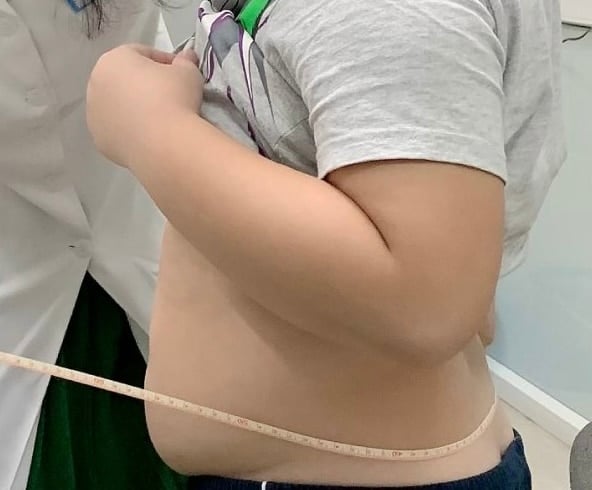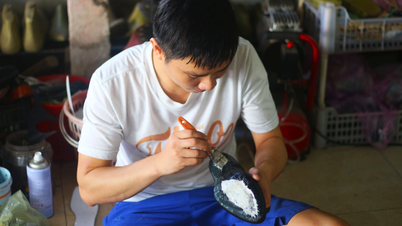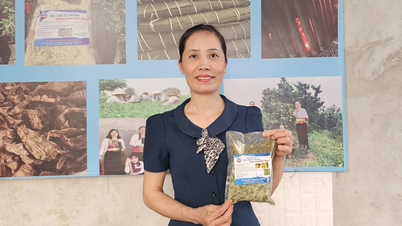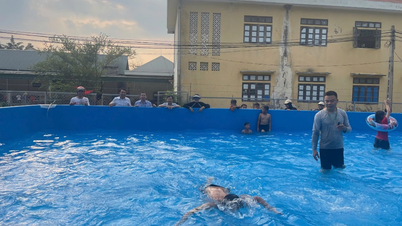Barriers to prevent infectious disease risks
The 25th National Pediatric Conference took place in Hue City (Thua Thien - Hue) from October 31 to November 2, focusing on the theme "From science to policy and practice". This is an important opportunity for health professionals to discuss advances in the field of pediatrics, especially child nutrition. The conference brought together many leading experts, contributing to orienting policies and improving child care practices in Vietnam.

President of the Vietnam Pediatric Association Tran Minh Dien said that pediatricians not only examine common medical conditions but also examine children's nutritional status.
Associate Professor, Dr. Tran Minh Dien, Director of the National Children's Hospital, Chairman of the Vietnam Pediatric Association, said that pediatric diseases are increasingly complicated. Regarding nutrition, experts note that this is a factor related to physical, mental and height development in children. In the context of malnutrition in children in our country, which is still common in different regions, more attention should be paid to the group of stunted malnutrition.
Associate Professor Dien believes that there needs to be new definitions of child malnutrition. For example, obesity is also considered malnutrition. There needs to be a broader perspective on child malnutrition, based on phenotype and cause criteria.
According to Associate Professor Dien, parents today pay a lot of attention to taking care of their children's health. This is a very encouraging issue. "However, I would also like to remind that in order to have proper nutrition and adequate nutrition for young children, we need to have a consulting system from pediatricians and nutritionists, avoiding the situation of gathering online and then encouraging each other to use certain foods and drinks that are not suitable and not nutritious enough. After being consulted by pediatricians and nutritionists, mothers and families need to pay attention to taking better care of their children's nutrition," Associate Professor Dien said.
Nutritional intervention is a process.
Regarding the role of pediatric clinicians in children's nutrition, Associate Professor Dien said that pediatricians not only examine medical conditions but also examine children's nutritional status.

Improper nutrition causes children to be malnourished, stunted, or obese.
“Another responsibility of pediatricians is to create the best awareness of proper nutrition, adequate nutrition for parents and caregivers, both when the child is sick and when he is well. Help restore nutrition for children after illness, maintain nutrition so that children can catch up with growth”, the President of the Vietnam Pediatric Association shared.
According to Associate Professor Dien, recently, the Vietnam Pediatric Association has met to discuss and develop a unified version related to screening, assessment and nutritional intervention procedures for children when they come to the hospital for examination and treatment. From there, hospitals can implement and apply this consensus, so that every child coming to the children's hospital will be screened and assessed to provide nutritional interventions.
“Based on the assessment results, doctors will provide guidance to parents, nutritional interventions through diets and oral nutritional foods appropriate for each child, not only for severely malnourished children, but also for children at risk of malnutrition and stunting.”
At the National Children's Hospital alone, 100% of children receiving inpatient treatment are assessed for nutritional screening and intervention is provided for approximately 30% of children showing signs of malnutrition.
Adult height needs intervention from early life
According to information at the conference, compared to other countries in the world and the region, the average adult height of Vietnamese people is still low, with men being less than 1.7 m and women less than 1.6 m. The height of adults depends on many factors, including the issue of stature in the early years of life. A malnourished and stunted child will have poor height later on.
The rate of stunting in children remains high, at around 20%. In mountainous areas, the rate is close to 30%. Meanwhile, the national target by 2030 is to reduce this rate to 15%.
Some opinions say that hospitals have not yet unified a set of screening and assessment tools for nutritional status in young children. If there is, the assessment mainly focuses on acute malnutrition, often missing screening and intervention for stunted children. There is not enough attention paid to the risk of malnutrition in sick children, who are vulnerable to malnutrition.
From this reality, the Ministry of Health, the Vietnam Pediatric Association, institutes... need to coordinate with units to build consensus and unify guidelines for nutritional screening and intervention for pediatric patients. In which, 3 steps to solve nutritional problems in hospitals include: identifying and diagnosing all patients at risk; quickly conducting intervention and continuous monitoring; developing a plan for education and nutritional care after discharge.
Source: https://thanhnien.vn/dinh-duong-qua-hoi-nhom-mang-nguy-co-cho-tre-nho-185241101163728043.htm



































![[Photo] General Secretary To Lam meets with Chairman of the Federation Council, Parliament of the Russian Federation](https://vphoto.vietnam.vn/thumb/1200x675/vietnam/resource/IMAGE/2025/5/10/2c37f1980bdc48c4a04ca24b5f544b33)
![[Photo] Ho Chi Minh City: Many people release flower lanterns to celebrate Buddha's Birthday](https://vphoto.vietnam.vn/thumb/1200x675/vietnam/resource/IMAGE/2025/5/10/5d57dc648c0f46ffa3b22a3e6e3eac3e)





























































Comment (0)